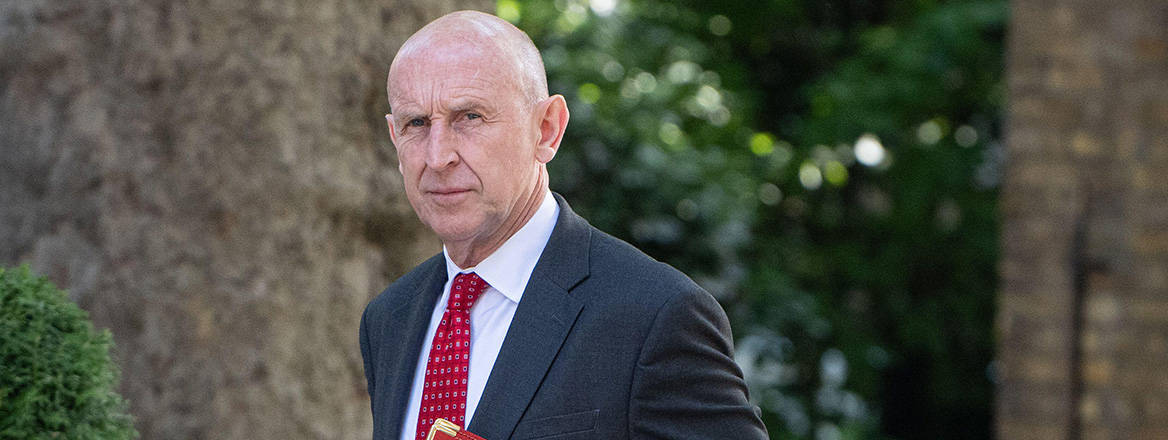Same, Same but Different? Launching UK Defence Innovation
UK Defence Innovation wants to accelerate UK defence technology and capabilities and provide a strategic approach to defence innovation. But to distinguish itself from previous initiatives, UKDI needs resources and a cultural shift to deliver innovation at scale and speed.
To ‘harness tech for the UK’s Armed Forces’, the UK Ministry of Defence launched UK Defence Innovation (UKDI) on 1 July. This is not the first time a body under the MoD is tasked with enhancing innovation and securing cutting-edge technology for UK defence.
Why the perceived need for yet another new body? Because innovating in defence remains hard: Hierarchical military organisations require a top-down approach. And while in the commercial world, small companies can disrupt well-established business models, defence remains a conservative sector. Disruption by innovators championing radical and untried approaches clash with a system in which most civil servants and military personnel are not incentivised to take risk – an inherent factor of innovation.
Furthermore, the difficulties of sharing sensitive information makes it difficult for companies to enter the defence sector. Once in, long project timelines that can take around five to six years from bid to delivery are longer than typical investment and financing cycles of start-ups and SMEs – they may be out of business by the time the first payments come through. For investors, this makes start-ups with a defence application a difficult value proposition.
Taking Inspiration from the US Defense Innovation Unit
New approaches are needed to tackle persistent challenges for innovation in defence. The exemplary model comes from the US, where in 2015, the US DoD created a ‘Defense Innovation Unit’ (DIU). Known to be a ‘significant driver’ of innovation and a successful bridge between the Pentagon and Silicon Valley, DIU has effectively been seen as an embassy for US defence among tech companies developing innovative tech capabilities in Silicon Valley or other innovation hubs, linking into these communities to identify interesting capabilities. The US DIU uses Commercial Solutions Opening (CSO) processes to contract with tech companies to rapidly prototype relevant technologies, aiming for 60-90 days and averaging 120 days to award prototype agreements - a stark contrast to the slow procurement cycles that typically shape the US acquisition process.
Not just the process, also the culture shapes DIU’s success. This includes attracting top talent from the civil service and tech industry and providing a work culture that incentivises taking risks. The DIU enjoys support form senior military and political leaders and the Defence Innovation Board recommended in January 2025 to further expand DIU.
Some are focused on enabling the military end-user to speak with product developers directly, some act more as start-up incubators to attract inward investments, while others seek to connect state-funded research programmes with the right companies
Over the past 10 years, institutions of similar names and nature have been mushrooming across Europe. Their aim is to unite technology developers and the military end-users, to create more awareness of the potential of technology with the military forces and signal to investors which technologies are the most interesting to them. The technological innovations seen in the Russo-Ukrainian war have further highlighted their advantages in combat and catalysed innovation activities across Europe. And the increased NATO spending targets mean that there is money to invest in and accelerate defence innovation and technology.
The UK’s New Innovation Ecosphere
Over the recent years, the UK has looked to model the US success. In its Strategic Defence Review (SDR), the government has recognised that defence innovation is ‘vital to stay ahead of our adversaries’. Indeed, the SDR goes as far as to call for defence to be ‘innovation led’ and proposes a ‘radical root-and-branch reform of defence procurement – combined with substantial investment in innovation’.
On 1 July, MoD launched the defence innovation unit endorsed in the SDR, the UK Defence Innovation (UKDI), tasked with accelerating innovation for UK defence and security. However, UKDI is not the first organisation tackling this challenge in the UK. There is a wide network of innovation hubs, centres, and task forces pre-dating the SDR, dealing with the innovation challenge in defence – an issue that has long been on the agenda for UK defence secretaries.
These initiatives sit at various levels of the MoD’s organisation and beyond, spanning from frontline commands, the MoD’s head office to Dstl, DE&S, the Department for Business and Trade, and UKRI. At these various levels, they fulfil different tasks. Some are focused on enabling the military end-user to speak with product developers directly, some act more as start-up incubators to attract inward investments, while others seek to connect state-funded research programmes with the right companies.
This scattered landscape of innovation units has been argued to lack the necessary strategic direction to unite their various innovation ambitions into a coherent approach that can deliver meaningful change to how the MoD approaches innovation as a whole and delivers it at scale.
To address this, the government has announced a ‘strategic consolidation’ of the landscape by providing an umbrella organisation for all these innovation hubs: UK Defence Innovation (UKDI). Within the purview of Strategic Command, now renamed Cyber & Specialist Operations Command, the new unit ‘brings together’ several existing initiatives such as DASA, DIU, the DE&S FCI and Frontline Commands’ units. The description of UKDI as an ‘umbrella’ leaves room for interpretation. The most direct line of responsibility concerns DASA, as the accelerator will be ‘an integral part of UKDI’. The nature of the relationship with the other innovation units will get clearer over time, with UKDI aiming to be fully operational by 2026.
Critical Success Factors for UKDI
For the private sector, start-ups and investors, greater cohesion and a strategic outlook are welcome measures, providing a clear point of contact and a more consolidated demand signal. So, is the UKDI such a centralised, true hub for all MoD innovation initiatives? The funding that it will command suggests that. The government announced that UKDI will have a ringfenced £400 million annual budget. It is easy to demand more money – something even the US counterpart faces - but hard to secure in tight economic constraints. If this constitutes a genuinely new and dedicated budget, this means that UKDI will do more than just control DASA, which has awarded significantly less per year in the past. That hints to a lead role of UKDI in innovation across its organisation.
Such a shift comes with challenges and risks. UKDI will need to pool the expertise that resides across the various sections of the organisation to be successful. This can put it at odds with those parts of the organisation that need to give up that expertise. The creation of the National Armament Director position and the formation of a new Military Strategic Headquarters show that there is ample political appetite for centralising defence structures. But centralisation can also be a threat to innovation. Independent hubs may be able to explore different ideas and solutions with different developers and producers. When there is too much emphasis on coordination, there is also a risk of creating path dependencies across the organisation. Independent hubs, while wasteful, can avoid those.
The challenge will be to allow wastage within the UKDI ecosystem of hubs that can create innovation for the Frontline Commands’ specific needs while utilising the power of a united innovation platform to address common problems
On the other hand, centralisation may help with some of the harder tasks any innovation organisation faces when it comes to MoD procurement practice. This practice has evolved to minimise risks for the MoD and the taxpayer. Civil servants are incentivised to follow this process, and there are few with an interest in inducing flexibility in that system for innovation’s sake. An organisation with more budgetary might and at the heart of the MoD’s structure may be better positioned to campaign for the necessary changes to make that process more permissive for innovation. The challenge will be to allow wastage within the UKDI ecosystem of hubs that can create innovation for the Frontline Commands’ specific needs while utilising the power of a united innovation platform to address common problems.
Lastly, a central innovation entity may enable a broader definition of innovation that goes beyond putting a shiny new toy in the hands of a special forces soldier. Harnessing tech for UK armed forces necessarily also means making the most out of technology for the infrastructure behind the warfighting soldiers: whether that is coordinating logistics, streamlining reporting duties or easing the administrative burden – there are more ways in which technology can empower UK armed forces beyond the battle line. UKDI must identify technological solutions that empower not just the few, but the UK Armed Forces as a whole. The new unit’s success will be judged on its ability to deliver such innovative capabilities at a large scale and within shorter timeframes than its predecessors.
© RUSI, 2025.
The views expressed in this Commentary are the authors', and do not represent those of RUSI or any other institution.
For terms of use, see Website Terms and Conditions of Use.
Have an idea for a Commentary you'd like to write for us? Send a short pitch to commentaries@rusi.org and we'll get back to you if it fits into our research interests. View full guidelines for contributors.
WRITTEN BY
Dr Pia Hüsch
Research Fellow
Cyber and Tech
Dr Linus Terhorst
Research Analyst
Military Sciences
- Jim McLeanMedia Relations Manager+44 (0)7917 373 069JimMc@rusi.org





